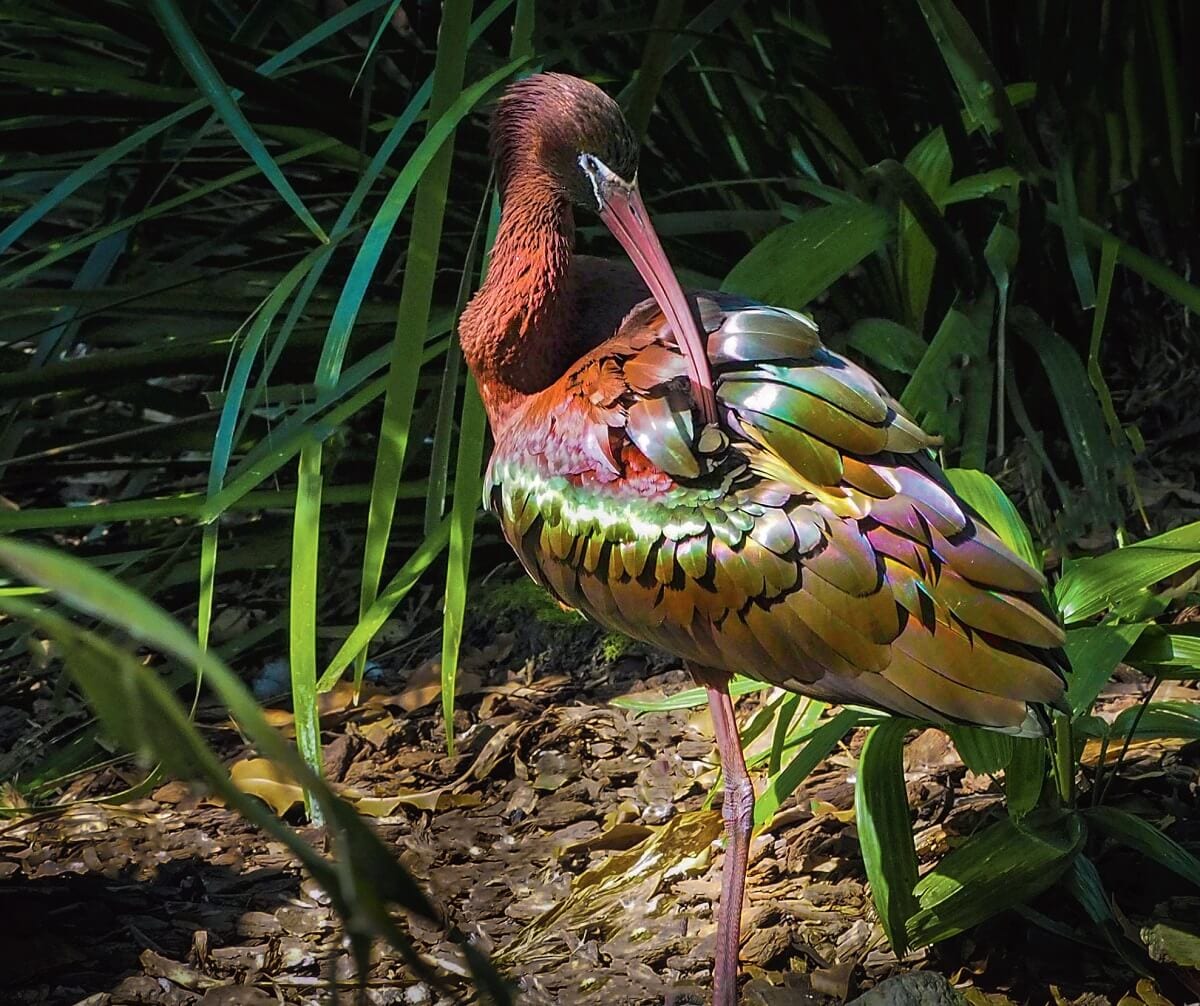Tags: Australian wildlife. Birds. IBIS. Native.
Unlike the common Australian White and the Straw-necked Ibises which thrive on Bribie Island, the Glossy Ibis is but a rare visitor. During the month of January in 2014, a Glossy Ibis arrived at Buckley’s Hole and stayed for several weeks causing much excitement among bird lovers. From a distance, Glossy Ibises appear to be plain blackbirds but up close the beautiful iridescent greens, purples, and pinks light up the reddish-brown feathers.

These colours become more prominent in the breeding season. They are smaller than the other two species of ibis in Australia being 48-66cm long, 55cm high and weighing from 500- 800g. Their wingspan is 88-105cm. When flying with necks and legs outstretched the usually quiet birds sometimes make croaking and grunting sounds but mostly they are silent. They often fly in V formation. Males have longer bills than females; otherwise, they are quite similar in appearance.

Their common name is Black Curlew. Glossy Ibises are widespread throughout the world being found in parts of all continents except Antarctica. They like to gather near water and can be found in shallow waterholes, swamps, and mangroves. In Australia, they could pop up at any waterhole anywhere in the country but more likely in the north. They are not common in the South East but one never knows when they will appear as they are extremely nomadic.
When feeding Glossy Ibises wade through shallow water searching with their long bills in the mud and aquatic vegetation for frogs, tadpoles, snails, and insects. They are fascinating to watch when feeding as they forage slowly for a short time then all of a sudden perform a colourful skipping action when moving to another spot. It is very unlikely to find a Glossy raiding of our rubbish bins.

Breeding is usually from October to February but particularly in the north, they wait for the rain. Like their counterparts, they nest in colonies near water and often in the company of other species. Their nests are untidy platforms of sticks built in vertical forks of trees over water. A clutch of 3-6 eggs are laid and are incubated by both parents for about 21 days. One egg is laid each day and the chick that hatches first has the advantage over the rest of the brood sometimes eating most of the food and starving its siblings. Both parents feed the hatchlings.
The babies remain in the nest for about 25 days and don’t leave the area for about 5 weeks when they can fly and feed themselves. A large breeding ground is in the Murray Darling Basin of NSW and Victoria where flocks of Glossy Ibis gather to nest with other species. The main threat to the Glossy is the draining of wetlands and water pollution. Conservation status is secure. They are common in the north of Australia but are most uncommon in other parts.
